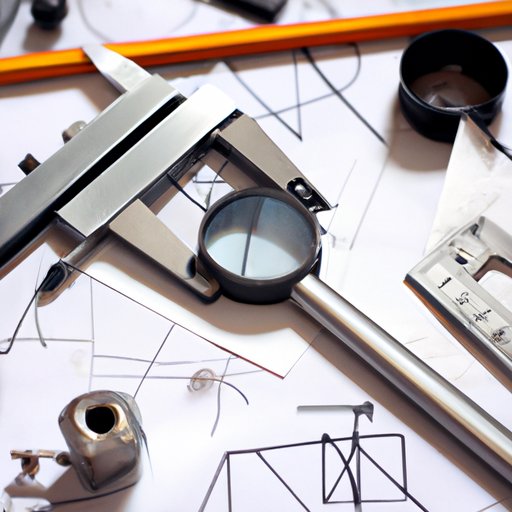I. Introduction
Designing an invention can be both exciting and daunting. The process demands creativity, innovation, and precision. However, with the right approach, anyone can design an invention that solves real-world problems and makes a significant impact. This article is designed to guide aspiring inventors and innovators through the process of designing an invention, from research and ideation to protection and manufacturing.
II. Do Research
Research is a crucial aspect of the invention design process. It can help inspire ideas and guide the design process. By researching the market and existing patents, you can identify gaps in the current market, avoid infringement, and even find opportunities for collaboration.
To ensure that your invention is unique, it is essential to conduct a thorough patent search. This will help you identify existing patents that may be similar to your idea and avoid potential legal problems further down the line.
Resources for conducting research include online patent databases such as the United States Patent and Trademark Office (USPTO), Google Patents, and the European Patent Office (EPO). Apart from these, market research, competitor analysis, and trend analysis can also provide valuable insights.
III. Identify a Problem
The first step in designing an invention is identifying a problem that needs solving. This can be a challenge that you personally face or a common issue faced by individuals or businesses. By identifying a specific problem, you can focus your design efforts and create an invention that addresses the issue effectively.
Successful inventions that started with identifying a specific problem include Post-It notes, designed to solve the issue of sticky bookmarks falling out, and the Swiffer, designed to solve the issue of messy floor cleaning. By identifying and addressing everyday problems, these inventions have become household names.
IV. Sketching and Prototyping
Once you have identified a problem and have an idea for a solution, it’s time to start sketching and prototyping. Sketching can help you get your initial ideas on paper, while prototyping can help you create more functional and detailed models to test and refine.
Effective sketches and prototypes should be simple, clear, and easy to understand. They should also be made with the target audience in mind. The goal is to communicate your idea quickly and effectively to others.
Tools that can help create effective sketches and prototypes include pencil and paper or drawing software like Photoshop or Adobe Illustrator. Physical prototypes can be made using materials like cardboard, clay, or 3D printing technology.
V. Get Feedback
Feedback is an essential part of the design process. Gathering feedback from potential users and industry professionals can help you refine and improve your invention, ensuring that it is easy to use, effective, and meets the needs of your target audience.
To effectively gather feedback, consider creating a survey or focus group to get the opinions of others. Be sure to take this feedback into account when making revisions to your design.
VI. Consider Manufacturing
Considering manufacturing during the design stage can save time and money in the long run. It is essential to take into account factors like production costs, materials, and assembly during the design process. This can help ensure that your invention is feasible to manufacture and helps to prevent issues during the production process.
Looking at existing manufacturing processes and collaborating with engineers and manufacturers can help you create an invention that is easy and cost-effective to manufacture.
VII. Protecting Your Intellectual Property
Protecting your intellectual property through patents and trademarks is vital to ensure that your invention is not copied or stolen. A patent can give you exclusive rights to manufacture, sell, and distribute your invention.
Resources for getting started with the patent process include the USPTO and resources like LegalZoom or RocketLawyer. Additionally, hiring a patent attorney can help ensure that your application is thorough and meets all legal requirements.
The benefits of protecting your intellectual property can include potential licensing opportunities, investment opportunities, and legal protection against infringers.
VIII. Conclusion
The process of designing an invention is both exciting and challenging. It takes creativity, research, and collaboration to bring an idea to life. By following these steps, you can create a successful invention that solves real-world problems and makes a difference.
Remember to identify a problem, sketch and prototype your ideas, gather feedback, consider manufacturing, and protect your intellectual property. With hard work and perseverance, anyone can design an invention that changes the world.
(Note: Is this article not meeting your expectations? Do you have knowledge or insights to share? Unlock new opportunities and expand your reach by joining our authors team. Click Registration to join us and share your expertise with our readers.)
